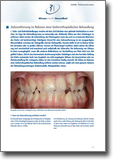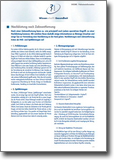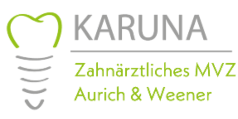Tooth removal
Most people can still remember their first tooth losses: The milk teeth almost came off on their own, were somehow "wobbled out" and presented to the parents radiantly.
In contrast, many people are afraid to have teeth removed by the dentist. Permanent teeth are no longer so easy to remove. The tooth roots are longer and the posterior molars are broadly anchored in the bone. Usually, the dentist tries to preserve all teeth for as long as possible. However, tooth removal (extraction) is necessary when the tooth can no longer be saved. Untreated caries or advanced periodontitis often require tooth extraction.
In children with milk teeth, the teeth usually fall out on their own, thus creating space for new teeth. Sometimes, however, it can happen that you have to pull milk teeth so that you prevent a later misalignment of the other teeth. Even with very severely damaged milk teeth due to caries or recurring inflammations, it may sometimes be necessary to pull a milk tooth.
Course of treatment
Wound stilling with gauze after tooth removal |
In most cases, local anesthesia is sufficient for the procedure. For very sensitive patients, the procedure can also be performed under general anesthesia. First, the affected tooth is loosened and then removed from the jawbone using forceps or other instruments. If necessary, the tooth is also crushed for better removal. After that, the area is cleaned and the overlying mucous membrane is sewn shut. In general, very close attention should be paid to oral hygiene after the procedure, as bacteria and germs can easily settle in a wound. Wound healing takes about a week, but varies from person to person depending on the type of procedure.
After that, depending on whether you get a bridge, prosthesis or an implant-supported denture, different procedures will continue. As a rule, the gap should not remain open for long in order to avoid subsequent problems such as bone loss and impairment of the masticatory system.
further information about tooth removal
 |
 |
 |
|||
